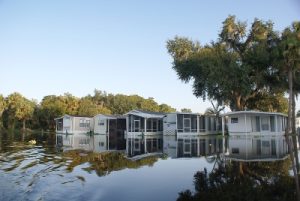
Severe weather events are on the rise. In fact, the U.S. set a new record for billion-dollar climate disasters in 2023. Extreme weather events do not discriminate. Hurricanes, fires, and tornadoes hit wealthy and poor areas equally. However, the recovery in those areas is not as equitable.
Realizing the Power of Power
A study found that low-income communities had to wait longer for power to be restored following hurricanes. The study found that a "1-decile drop in socioeconomic status in the Centers for Disease Control and Prevention's social vulnerability index was associated with a 6.1% longer outage on average."
Standard recovery policies and procedures may be to blame. In power restoration, critical infrastructure and commercial and industrial areas are prioritized. Next, power companies look for quick fixes--areas where they can restore as many households as quickly as possible. While this policy makes sense logistically, it has a serious impact on underserved communities that tend to be further away from commercial corridors and critical infrastructure. Poorer communities also frequently have older infrastructure that requires more time to repair.
When FEMA Leaves Who Takes Over?
Equity in response is a focus of federal, state, and local government immediately following a disaster; however, long-term recovery is rarely as equitable. The U.S. Department of Housing and Urban Development (HUD) has quietly become a central part of the response to climate change. Funding for long-term recovery projects frequently comes from HUD as communities look to rebuild affordable housing options.
The influx of money for recovery offers an opportunity to reimagine housing options in a community. The path to get there is not always smooth. The state of North Carolina worked to rebuild after Hurricane Florence in 2018, but paperwork and procedural delays meant it took five years to open the new housing facilities.
Planning for the Worst
Knowing the inequities in disaster recovery, planning, and preparation is critical. Utility companies and local governments need to have plans in place for disadvantaged communities to ensure they have backup sources of power or an evacuation plan. The U.S. Department of Energy is leading one such program, developing dozens of resilience hubs and microgrids to help supply local power to key buildings within communities when the wider grid goes down.
Prevention is also critical. The Weatherization Assistance Program has been in place in some form since 1976 and has helped to weatherize 7.2 million low-income homes. The program was issued $3.5 billion under the 2021 Bipartisan Infrastructure Law, with additional funds promised under the Inflation Reduction Act. In order to fully utilize those funds for the long-term need, Green Workforce Connect is working with community and nonprofit organizations nationwide to find and train thousands of people to seal and retrofit aging homes in order to carry out the spirit of the Weatherization program.
To learn more about how governments at the federal, state, and local levels are preparing for and responding to climate events, check out these resources.
- Sustainable Facilities Forum (May 9, 2024; Sacramento, CA) - Learn strategies, best practices, and technologies behind successful public-sector facility projects.
- Law Enforcement & Public Safety Forum 2024 (May 14, 2024; Washington, DC) - Data insights are even more crucial for public safety as natural disasters occur more frequently and technological disasters such as power outages, chemical incidents, dam failures, and power plant failures threaten the safety of communities. The right data can enhance disaster preparedness, response, and recovery, giving government and emergency response officials early warning about impending threats so they can make more informed decisions to protect communities and save lives.
- Federal News Network's Sustainability Exchange 2024 (December 5, 2024; webcast) - Hear from agency and industry leaders as they discuss sustainability goals issued by the White House and how agencies can make strategic decisions to achieve them.
- U.S. Environmental Protection Agency (EPA) Environmental Justice Activities and Programs (white paper) - The consideration of environmental justice across federal programs and activities is not mandated by statute. Several executive orders have provided direction to federal agencies to incorporate environmental justice considerations into their policies and programs within the bounds of existing statutes.
- Federal Flood Risk Management Standard Climate-Informed Science Approach (CISA) State of the Science Report (white paper) - This report introduces two flood hazard projection workflows that describe the elements that are recommended to be considered when applying the CISA for coastal- and riverine-related flooding, the two flooding types where the present understanding is most mature.
- Workshop on Incorporating Climate Change Data in U.S. Building Codes and Standards (white paper) - This report brings the building codes and climate science communities together to take stock of climate data needs, especially the type, format, and scale of climate projections at pertinent spatiotemporal scales and tools.
Explore more insights on disaster response and recovery on GovEvents and GovWhitePapers.



